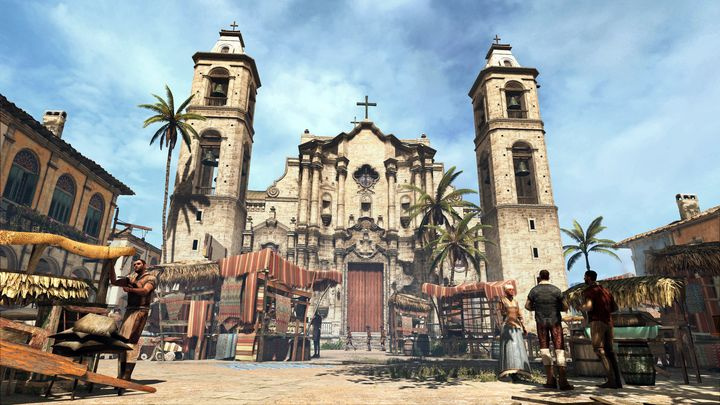Games as learning tools come to play more and more often in the heritage sector, following the footsteps of education. They vary in types and are a valuable asset to teach heritage, especially for the younger generations.
Games are fun and can illustrate complex concepts in an accessible manner. Within the game environment, heritage moves beyond a visual experience to an interactive one you can experience new cultures and identities, touch and manipulate the environment.
Furthermore, games use and cultivate a broad skill-set applicable to other disciplines, such as creativity, quick problem-solving, precision, strategising, critical thinking, social skills, multitasking and many more.
There are games already incorporating elements of history and monuments, where you get to experience places through time and space. Imagine touring 18th century Havana, and experience monuments at their erection or height, well you can, with Assassins Creed IV. The Assassins Creed games, make a point of incorporating real-life places, monuments, sites and everyday life in another era and compare and contrast them to present-day. Of course, these games are not a tool designed to teach history or heritage but their artistic interpretation. Historical inaccuracies aside, they are a great example of experiencing heritage through games, explore sites from different vantage points (like the roof), periods, connect with other cultures and the past or even visit monuments that no longer exist. There are many more commercial games that include learning history, communication and human evolution, the pillars of heritage, through simulation such as Sid Meier’s Civilization, Pompei: The Legend of Vesuvius, or ponder philosophy with the Talos Principle.

Havana Cathedral, Assassins Creed IV.
Creating a game at this scale, especially a good game, is quite complicated and costly and most small heritage organisations cannot invest in such activities. However, this should not discourage anyone from being creative in teaching heritage, if you do not have the resources:
- Use existing games, digital or tabletop, and adapt them. The Museum of Modern Art (MoMA) utilises a variety of interactive techniques to teach art and offer online courses for educators.
- Reach out and partner with companies or institutions that design games with learning elements.
- Even better, why not create an educational program on video game design for your local community and work together on creating one. A fantastic opportunity to connect with your community, work together in addressing their needs and build marketable skills.
Minecraft Heritage Project by GeoFort is one of the most successful games teaching heritage values. Minecraft is an immensely popular game where you can build worlds, GeoFort created a server (GeoCraftNL) where people, especially children, are invited to recreate heritage sites or buildings from their local cities through photos. They host workshops, partner with other heritage institutions and make their project a benchmark for people to implement everywhere. What are the learning outcomes? Geospatial thinking, link online and real experience, be part of an online community and explore a recreation of monuments, castles, cathedrals etc.

©GeoFort website
When designing your game, as with any educational activity, you need to consider the learning outcomes, ensure their visibility through an enjoyable experience, provide proper training to instructors and measure its success in transmitting heritage values. Along with the elements of design such as animation, writing and dialogue, role-play, movement, accuracy etc. Build a multidisciplinary team of professionals who can ensure meeting all the criteria for a successful product.
Additionally, incorporating games as part of your heritage experience will not only educate but increase the visibility and outreach of your projects.
If you have already digitised heritage assets, this can be the foundation for creating a game on the subject to promote and educate offering a more fulfilling experience and in-depth understanding. Additionally, for collections that have not yet been digitised the prospect of incorporating them in a game can serve as a fundraising incentive to attract potential donors outside your current pool.
Creating games that teach heritage is a worthy long-term investment as it can be a powerful resource for visibility, communication, education and even financial.
Local Approach would love to include more similar projects if you have or plan to implement one, please share with our community your work.
I want to learn more:
“What Video Games Have to Teach Us About Learning and Literacy “, James Paul Gee
“Gaming the Past Using Video Games to Teach Secondary History”, Jeremiah McCall
Art & Activity: Interactive Strategies for Engaging with Art, MoMA (online course)
How Museums Are Using Minecraft to Gamify Learning Experiences
Our related articles:
Cultural Heritage Video Gaming: Virtual Songlines
Nunalleq, Stories from the Village of Our Ancestors: education for the future

